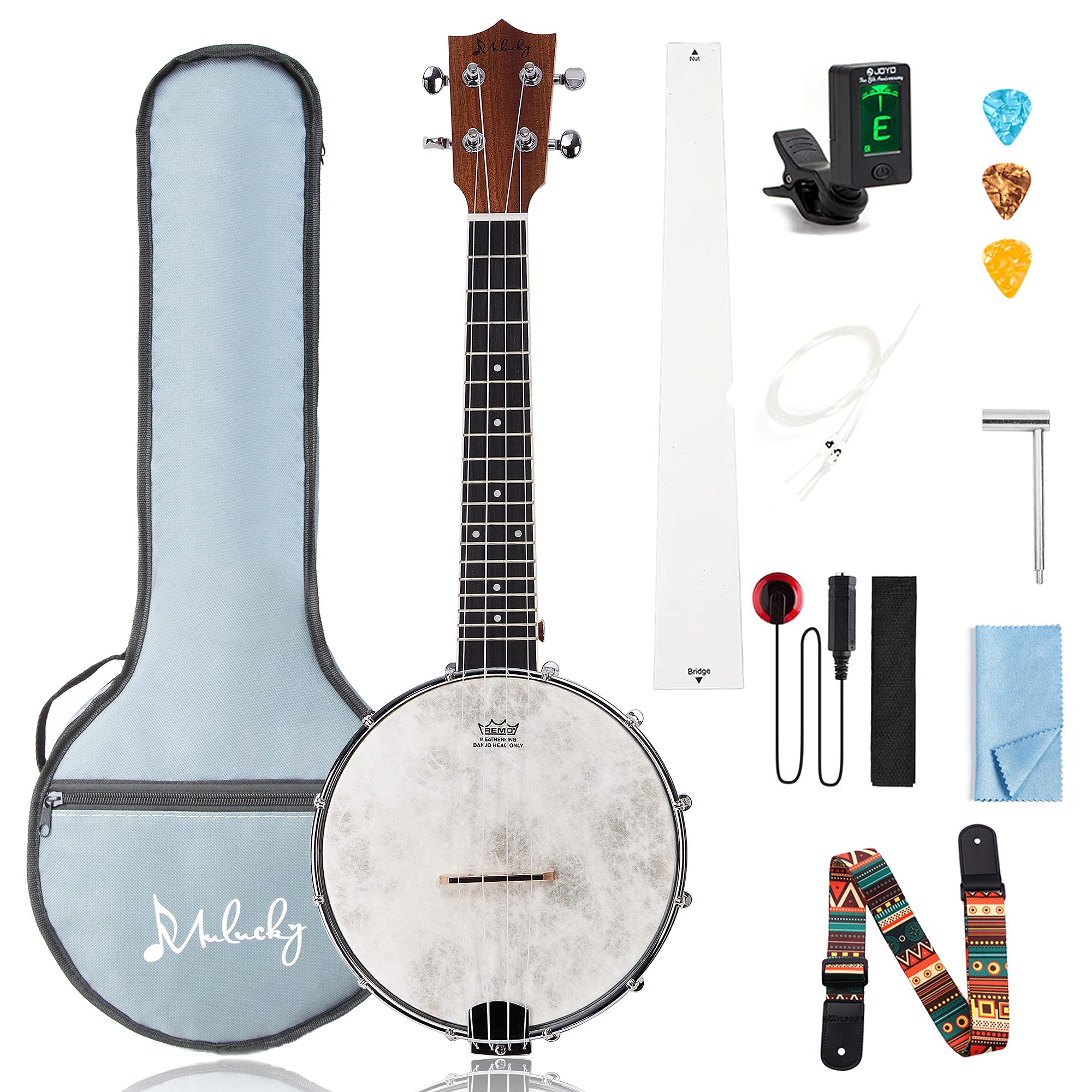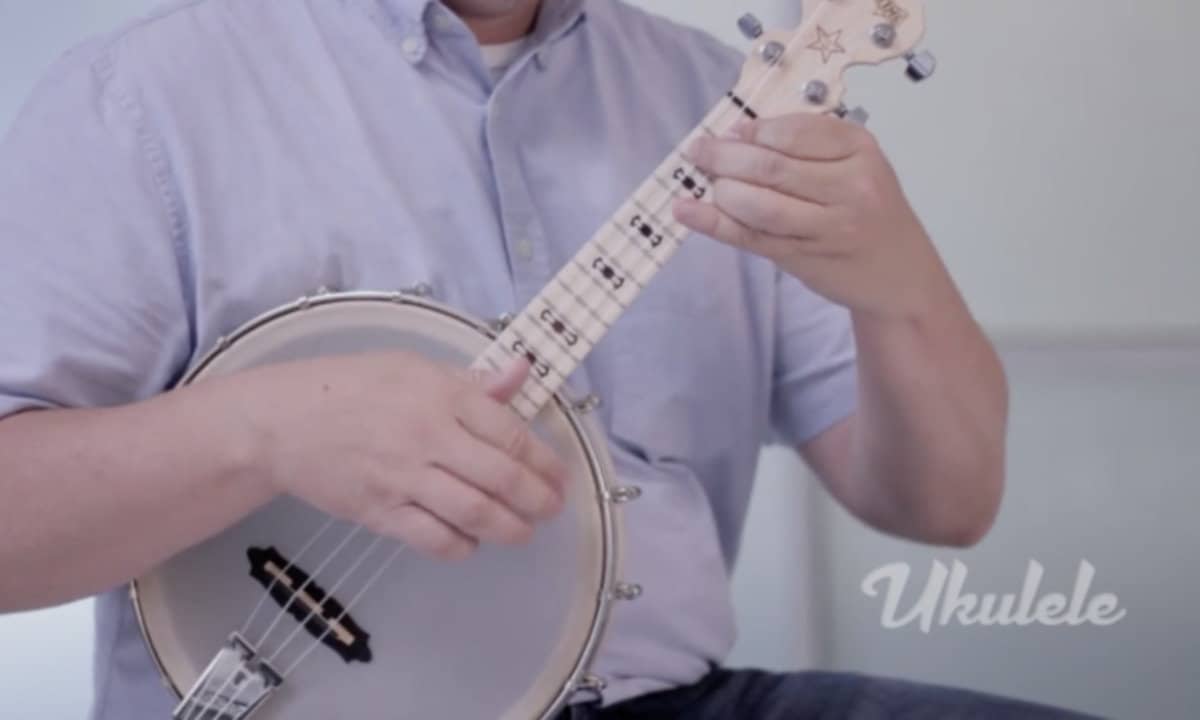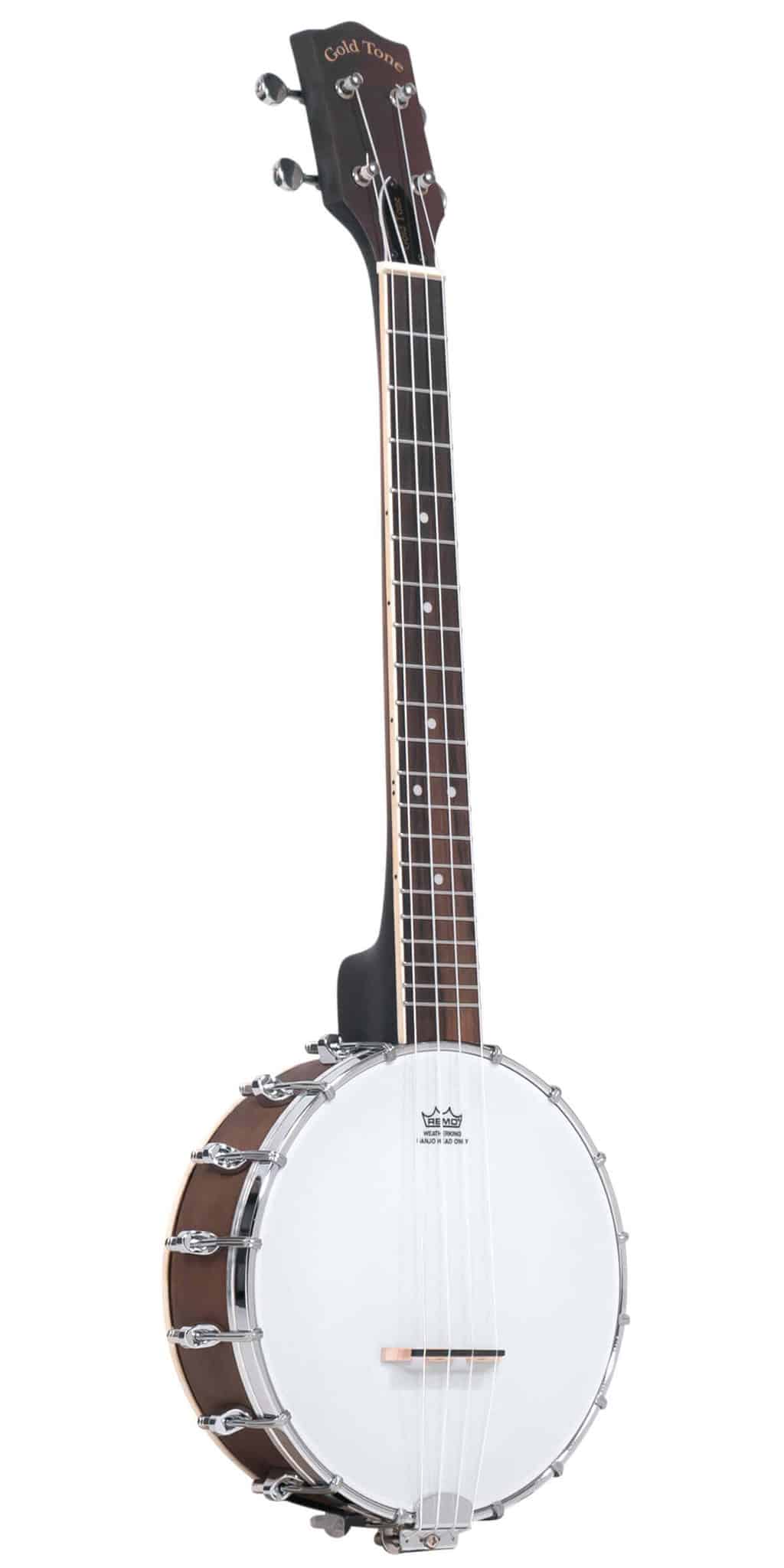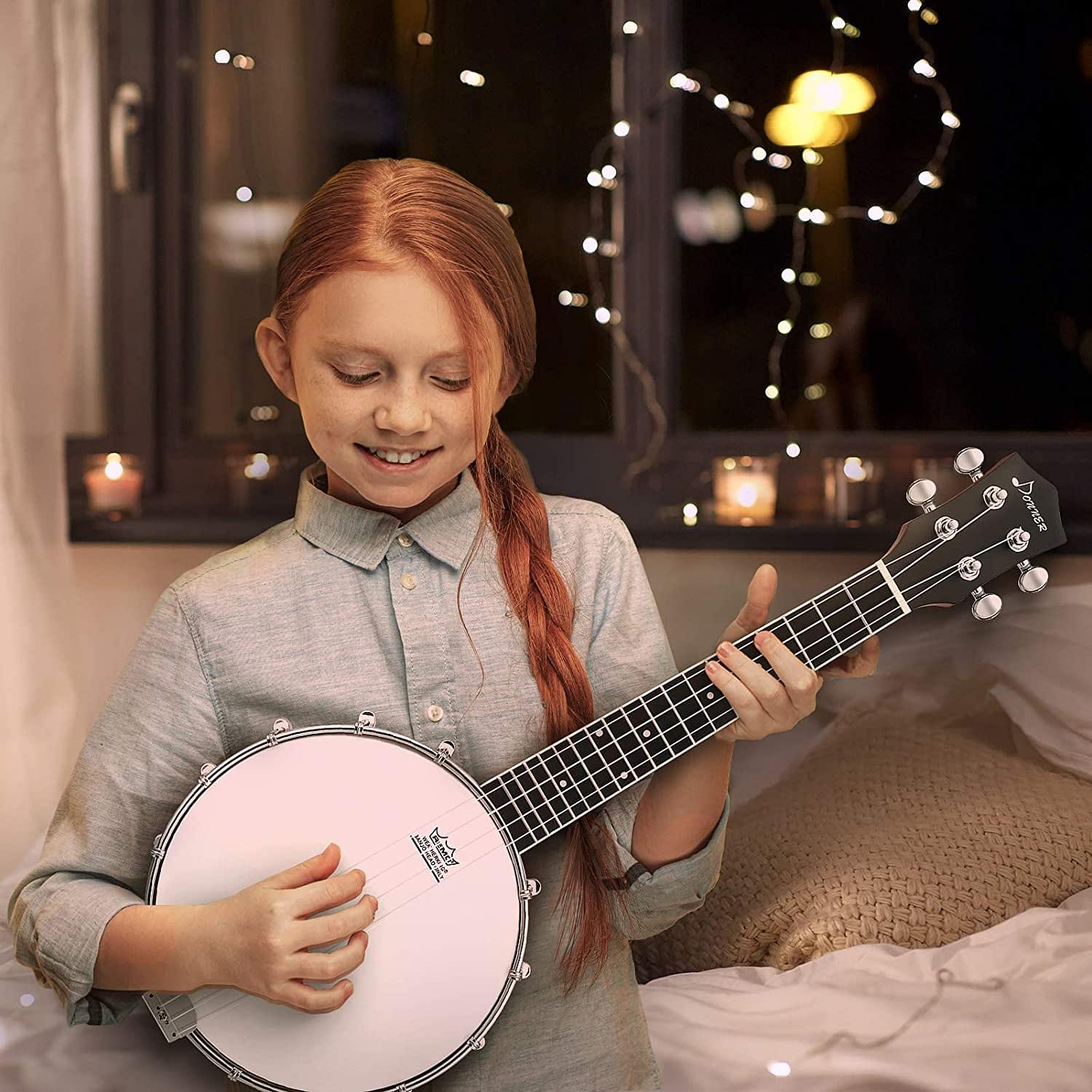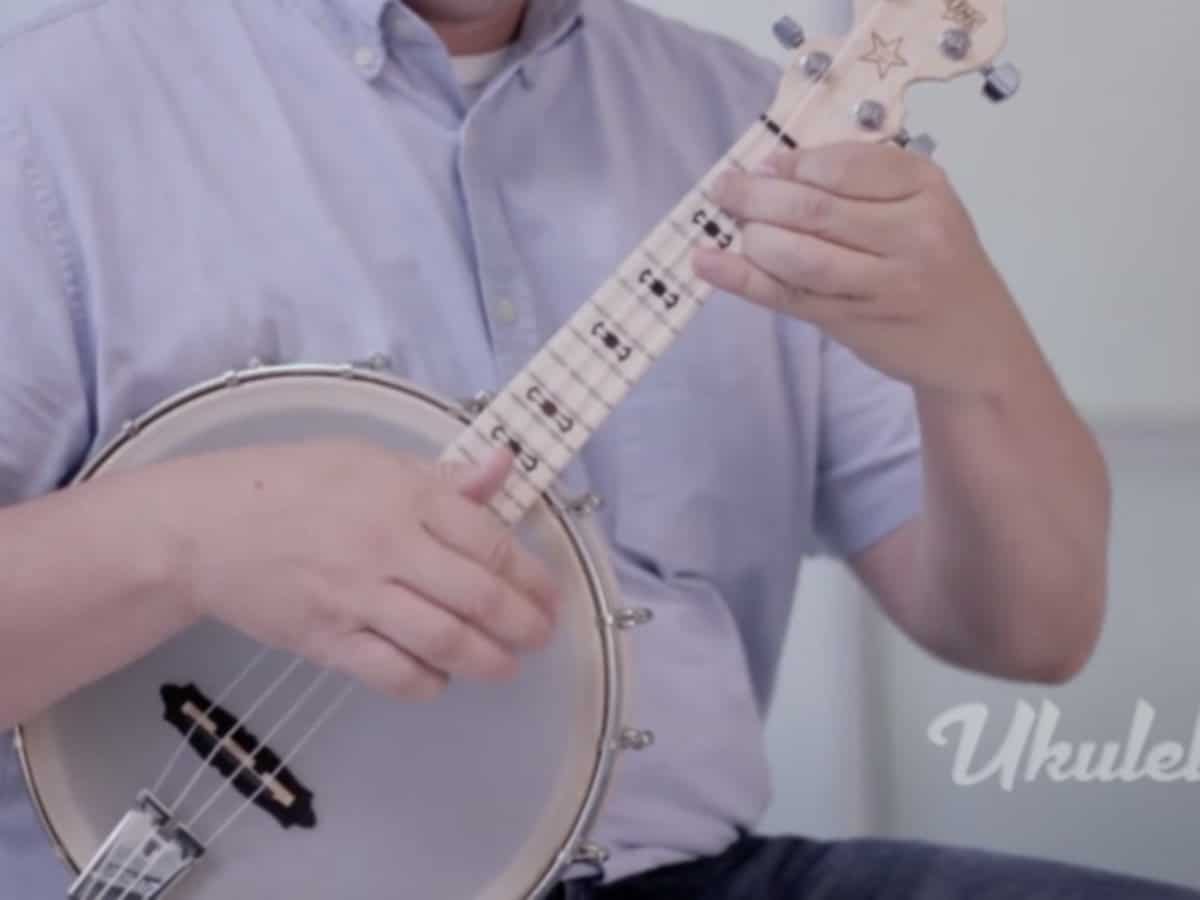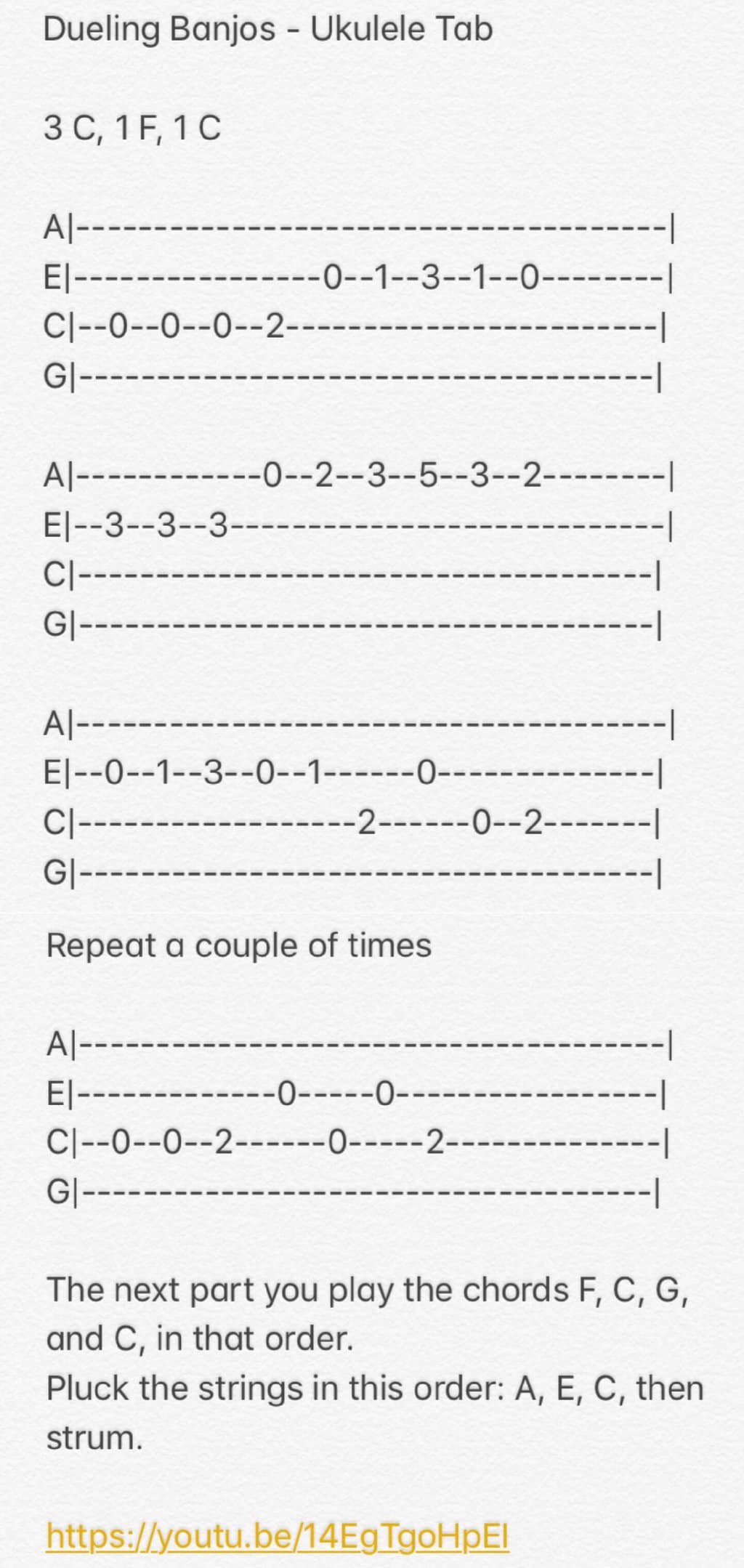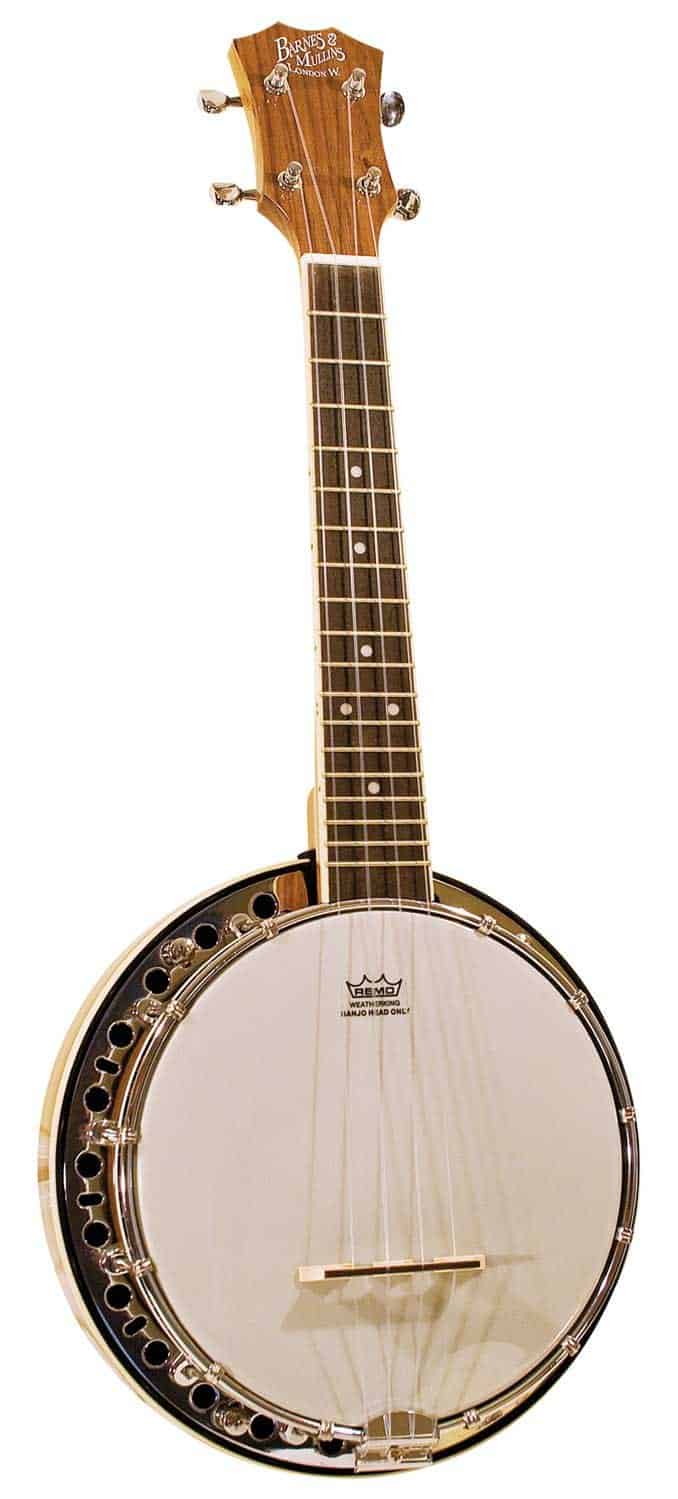If you are looking for a fun and unique way to make music, then you should learn how to play the banjo uke. This instrument is a hybrid of a banjo and ukulele, and it has a sweet, jangly sound that can bring life to any song. In this article, I will explain the basics of how to play the banjo uke and show you how to unlock its full potential. With a little practice and patience, you will soon be able to make beautiful music with this instrument.
Basic Terminology
- Banjo Uke: A banjo uke is a banjo-ukulele hybrid instrument.
- Tuning: The four strings of a banjo uke are tuned in a gCEA tuning.
- Strings: The banjo uke has four strings, which are usually a combination of nylon and metal strings.
- Fretboard: A fretboard is a flat surface on the neck of the banjo uke, on which the frets are located.
- Frets: Frets are small metal strips that are embedded into the fretboard. They divide the fretboard into sections and allow notes to be played in different pitches.
- Chord shapes: Chord shapes are patterns that are formed on the fretboard when certain frets are held down.
- Strumming: Strumming is the act of brushing a pick or your fingers across the strings of the banjo uke.
What You Need To Get Started
| Item | Description |
|---|---|
| Banjo Uke | A banjo uke is a hybrid instrument that combines the banjo with the ukulele. It has a small body, usually made of wood, with a banjo head and a combination of four strings. |
| Pick | A pick is a small plectrum used to pluck the strings of the banjo uke. |
| Tuner | A tuner is a device used to accurately tune the strings of the banjo uke. |
| Music Stand | A music stand is a piece of furniture used to hold sheet music while playing the banjo uke. |
| Metronome | A metronome is a device used to help keep a steady tempo while playing the banjo uke. |
Tuning the Banjo Uke
- Tune the strings from the top E string to the bottom G string.
- For the E string, tune to a high E.
- For the A string, tune to a low A.
- For the C string, tune to a C.
- For the G string, tune to a low G.
The Banjo Uke is typically tuned in the same manner as a regular banjo. It is typically tuned G-C-E-A. The G string is the lowest string, and the E string is the highest string. It is important to tune the strings carefully and accurately, as an out of tune Banjo Uke can sound terrible. Make sure to use a digital tuner and check the tuning of each string before playing.
Holding the Instrument
- Place the banjo uke on your lap with the strings facing up.
- Hold the neck with your left hand, and the body with your right.
- Position your left hand thumb on the back of the neck and the remaining fingers in a curved position on the fretboard.
- Position your right hand so that the thumb is about one inch from the edge of the body, and the remaining fingers wrap around the body.
- Adjust the position of your hands until you are comfortable.
Strumming the Strings
- One of the most important parts of playing a banjo uke is strumming the strings.
- The strumming technique involves using a flat pick to create a rhythmic sound.
- To strum, hold the pick firmly between the thumb and index finger and move it in a downward motion across the strings.
- It is important to maintain a steady rhythm and keep the pick moving in a consistent pattern.
- Strumming can be done in a few different ways, including up-strumming, down-strumming, and alternating between the two.
- It is also important to use the proper amount of pressure when strumming. Too much pressure can cause the strings to buzz.
- Experiment with different strumming techniques to find what works best for your style of playing.
Basic Chords
Banjo ukuleles are tuned to the same four notes found on a standard ukulele, G-C-E-A. This makes the basic chords used to play the instrument the same as a standard ukulele. The diagram below outlines the most common chords used in banjo ukulele playing.
| Chord | Notes |
|---|---|
| C | C, E, G |
| G | G, B, D |
| D | D, F#, A |
| A | A, C#, E |
| F | F, A, C |
| E | E, G#, B |
These chords are the foundation for playing most songs on the banjo ukulele. Other chords can be used, but these are the most common.
Finding and Learning Songs
- Search for banjo uke tabs and sheet music online.
- Listen to recordings of banjo uke songs to familiarize yourself with the sound.
- Find people playing banjo uke on video-sharing websites.
- Take lessons from a banjo uke instructor if available.
- Practice with a metronome to help keep time.
- Break the song into sections and practice them one at a time.
- Experiment with different chords and notes to improve the song.
- Record yourself playing and listen back to identify mistakes.
- Perform the song with a group or by yourself to build confidence.
Playing with Others
| Activity | Description |
|---|---|
| Jamming | Getting together with other Banjo Uke players and playing in a group. |
| Performing | Playing for an audience. |
| Accompanying | Playing along with other instruments or singers. |
Playing with others is an important part of learning to play the banjo uke. Not only does playing with others give you an opportunity to practice and refine your skills, it is also an enjoyable and social activity. There are several activities that can be enjoyed with other banjo uke players, such as jamming, performing, and accompanying.
Jamming is when a group of banjo uke players get together and play in a group. It is a great way to practice and learn new techniques, as well as to enjoy the music together.
Performing is playing the banjo uke for an audience. This is a great way to show off your skills and get feedback from listeners.
Accompanying is playing along with other instruments or singers. This is a great way to practice playing with others and learn how to adapt to different styles of music.
Troubleshooting Common Problems
If a string is buzzing or not playing at all, check the position of the nut. If it is too low, the string may be buzzing against the frets, or the string may not be ringing out properly. If it is too high, the string may be too far away from the fretboard, resulting in an inability to press the string down. Adjust the nut accordingly.
If the string is still buzzing, check the action. Action is the distance between the strings and the fretboard. If the action is too low, the string may be buzzing against the fretboard. Adjust the bridge height, or the truss rod, to raise the action.
If the string is still buzzing, check the fret. If the fret is too high, the string will buzz as it is pressed down. If the fret is too low, it may be difficult to press the string down. Carefully file down the fret, or replace it, if necessary.
If the tuning pegs are not holding the string in tune, check to make sure the pegs are tight. Make sure the string is winding around the peg in the correct direction. If the problem persists, the pegs may need to be replaced.
If the instrument is not producing a clear sound, check the strings. Old strings can cause a muddiness in the sound. Replace the strings if necessary. Also, check the fingerboard for any dust or dirt. Clean the fingerboard to ensure a clear sound.
Frequently Asked Questions
What is a Banjo Uke?
A banjo uke, also known as a banjolele, is a four-stringed instrument which combines the body of a banjo with the neck and tuning of a ukulele. It is usually tuned to the same pitch as a standard ukulele (GCEA) and is often used in a variety of genres, including folk, blues, country, and jazz. The banjo uke is a relatively new instrument, having been introduced in the early 20th century.
What are the Benefits of Playing a Banjo Uke?
Playing a banjo uke can be a great way to develop your musicality and skills. It is a great choice for all levels of musicians, from beginners to more advanced players, as it is relatively easy to learn and offers a unique sound. The banjo uke can also be a great choice for those who want to learn how to play an instrument in a relatively short period of time. Additionally, it is also a great way to introduce children to music and the ukulele. It can provide a fun and creative outlet for players of all ages.
Are There Different Types of Banjo Ukes?
Banjo ukes come in several different types and sizes, including soprano, concert, tenor and baritone. Each size offers a different tuning and sound, allowing you to choose the most suitable for your playing style. Soprano and concert banjo ukes are the most popular and typically feature four strings. Tenor and baritone banjo ukes usually have five strings.
What materials are used to make a banjo uke?
A banjo uke is typically made from a combination of wood and metal components. The body of the instrument is usually made from wood, such as maple, mahogany, or rosewood, while the soundboard is often made from a thin sheet of plastic or metal. The strings are usually made from steel or nylon, and the bridge is usually made from plastic or metal. The tuning pegs are usually made from metal, and the fingerboard is usually made from a hardwood such as ebony or rosewood.
Do I need to Learn Special Techniques to Play a Banjo Uke?
Yes, you will need to learn some special techniques to play a banjo uke. The strings are typically tuned differently than other stringed instruments, so you will need to learn how to adjust the tuning and how to play various chords and melodies. Additionally, banjo ukes usually have a lot of frets, so you may need to learn how to play barre chords and learn basic fingerpicking patterns. With practice and the right techniques, you can master the banjo uke and make beautiful music.
Conclusion
Banjo uke is a fun and accessible instrument that can add a unique flavor to any musical style. With its small size and bright sound, it can be played anywhere and is a great way to get started with stringed instruments. As with any instrument, practice and patience will help you unlock the sweet sounds of the banjo uke. With time and dedication, you can create beautiful and unique music.

